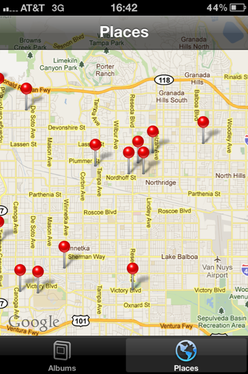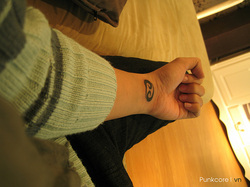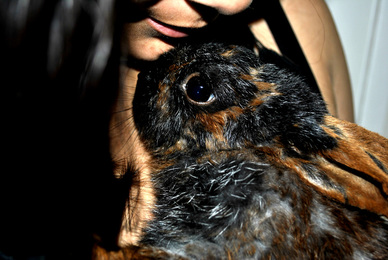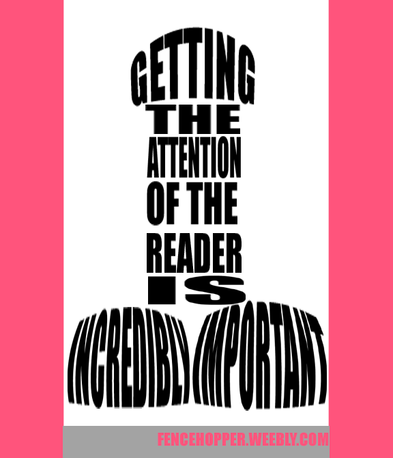 The pavement was stained and broken but the spirit had never been more intact.
Every year the halloween-themed bicycle event "Choppercapras Horrorcycles" takes place in the middle of the San Fernando Valley. This year it was to start 12 sharp, "not 12 hipster time," according to their facebook event page. I'd hate to imagine how late hipsters tend to be as this event didn't get going until 1:15 P.M. However, I forgave the tardiness after witnessing the games.
A host dressed like a Spartan stood at the back of a coliseum improvised from a parking lot with a circle of orange traffic cones. The steeds were tall bikes, welded together from the frames of two smaller bikes. The swords and maces were made from Styrofoam and duct tape; the audience roared and threw these weapons and nets at the participants.
During the chariot races the athletes rode dirty pick child's bicycles, their teammates on carts in tow. Between the intensity of the race and the shoddiness of the mount, several fell and wheels broke off mid-race, follies which only served to further enliven the audience.
The entropy, amiable bicyclists so mired in their own subculture, the silly costumes and rough-housing illustrated a notion that has been denied historically by Los Angeles residents--that the San Fernando Valley does have culture. The culture of the bicyclists embraces gritty, hap-hazard spontaneity was unlike any other I had witnessed, in LA or elsewhere.
I recently was to deal with an abandoned hoard of rabbits that were going to be killed, and I had to research how to get them to homes. One option was a local no-kill rabbit-specific shelter. They were full, which is understandable. I asked them how long it takes them to adopt out rabbits. The representative estimated that they adopt out one pair of rabbits every few months. Contrast this with the pet stand in a nearby swapmeet that gets an estimated 25 rabbits to homes every couple of weeks. The shelter is definitely a better place to get a pet, for a multitude of reasons, not the least of which involves the importance of rescuing an animal from euthanasia. In fact, we support banning pet stores that sell commercially-bred pets in malls. Pet stores, including this pet stand at the swap meet, get their animals from breeders and pet mills. For animal enthusiasts, it can be frustrating to know that anyone would think of buying a pet from a breeder or store when there are so many that need to be saved. However, it turns out that sometimes consumers are incentivized to buy new animals. Let’s compare the Rabbit Resource Center with the pet stand: |
Rabbits from:
________________
Fee:
________________
Location:
________________
Requirements for adoption:
________________
Rabbits Are:
________________
How many rabbits gotten to homes each year (estimated):
________________
| Rabbit Resource Center
Abandoned Rabbits
$95
Strip-mall on side-street
-Must not be for a child or class room
-Must take at least two, or already have one at home
-Indoor housing
-Home visit
-No non-spayed or non-neutered rabbits at home
-You must commit to having the animal its entire life
-Must fill out 3-page application
-Follow-up home visit
-Adult
-Spayed/neutered
-Socialized
-Litter-box trained
10
| Pet Island Pet Stand
Breeders
$25
Heavily Trafficked indoor swap meet
-none
-Young
600 | Animal volunteers are caring people who want to make sure that the animals go to the best home available. Policies are in place to make sure that animals that are adopted out go to suitable guardians who will take good care of them throughout their lifetime. It is important to see where the animal is going, and make sure that the adopter knows what it means to adopt a pet. This makes sense, except when shelters and rescues go overboard. The pet overpopulation problem is a desperate scenario, so we should treat it with some desperation. When I adopted out the rabbits I had in my care, I put as much effort as I could into finding homes for them fast, and the only stipulation was that I would trust the new guardians. They were given to friends and friends-of-friends and, as I’ve followed up with them, I know they are all healthy and happy in their homes. What would have happened if I had given them to a rescue? An Examiner article details an account of someone in the market for a pit bull being denied by a rescue group. The potential pet-guardian found a perfect rescue pet, but the policy mandated that he keep the dog in a crate while he is not home. The rescue suspects that any dog left to wander the house while the guardian isn’t around will chew on property and then be returned to the facilities. The adopter insisted that he would not return the dog if that happened, and he refused to crate the dog while he was not home. When he was rejected, the dog went to the shelter, and the adopter instead purchased a dog from a breeder. Think of all the ways that the rescue could have handled the situation differently. They could have made an exception. They could not enforce that particular rule. They could let the adopter take the dog for a trial period to see how the animal acted at home. They could at least give the dog over for some time; even if he does return it, where’s the harm? Here are actual rules that some shelters and rescues enforce regarding adopters: - No adopters with children (minimum age varies)
- No adopters who work (so you must spend most of your time home with your pet)
- Adopters must have a gated yard
- Interview with your vet (no first-time pet guardians)
- No one wheelchair-bound (must be able to walk the dog yourself, you cannot delegate or hire someone)
- No other pets at home
Regardless of whether the animal you’re trying to adopt is at a kill-shelter or no-kill, you’re saving a life. Even the happiest, friendliest, cutest animals are killed every day at kill-shelters when they run out of room. Before the shelter kills an animal, though, they often call no-kill shelters. If there is any room there, the animal will be transferred. Every time an animal is taken from a no-kill shelter, it means that one from a kill shelter will be saved. The Rabbit Resource Center consistently gets calls from animal shelters asking if they have room to take in more red-listed (few days to live) animals, and they rarely do. If they could adopt out their animals in a more efficient manner then they wouldn’t have to pass up so many opportunities to rescue shelter rabbits. Here are some suggestions on how shelters and rescues could benefit by acting more like pet stores: - Invest in well-trafficked areas, such as shopping malls, so people can see the animals.
- Instead of tons of rules, talk to each adopter and assess whether the situation is right for the animal.
- Bring in rescued purebreds and charge money for them. Oftentimes, people think that the more expensive something is, the better it is. (That’s certainly not true with animals, but people still think that.)
- Put lower fees on animals that have been there a long time. Make sure that no animal costs more than he or she would at a breeder.
- Put low fees on animals, but charge for mandatory spay/neuter vouchers for those that are not fixed.
- Showcase a variety in front. There may be someone who has been looking for a tortoiseshell tabby for a long time and sees you have one.
- Hire business people: Advertisers to promote them, behavioral economists to improve sales, etc.
There are also many things that pet stores do that shelters should never emulate. I understand that one reason that shelter fees can be high is that they actually take care of their animals and don’t try to mass-produce them. That should remain standard. Pet stores are also often dishonest about where they got their animals, and the health and background of them. While a pet-store-like model could increase efficiency, shelters must always maintain their primary goal above (though not instead of) profit: to help animals. I want every dog, cat, rabbit and pet to find the best forever home in the world. But a system that makes it harder to rescue a pet than to support puppy and kitten mills is completely backwards. When so many are killed for want of a home, animal volunteers must remember that a good but imperfect home is better than the back room.
If you live in the northern part of Northridge, the borders of Northridge technically define your community. Granada Hills South is a separate community which exists just north of Northridge. Both communities have news and their community journalism would focus only on news that took place within each respective city. So what of the residents that live on the border of the two? Do they only belong to one community? Do readers care more about news that happens across the city or across the street, even if it's technically in a different city? The end of one's personal community is not based on gerrymandered lines.
The app I am proposing would aggrogate (collect) content from news sources. Each piece would be geotagged, or marked with a code that corresponds with a point on an interactive Google map. Then, to see news, users would view the map closest to wherever they are (or would like to view news) and click on the markers showing where news has taken place.
Online community journalism has succeeded in large part by embracing the internet and social media. Most news outlets (as well as many other companies) have Facebook and Twitter accounts, which they use for updates, promotion, interaction with readers and crowd-sourcing. However, news outlets have failed to use a potentially game-changing technology called geotagging.
Geotagging adds geographical identification data to content such as photos and tweets. It uses the GPS in your mobile phone or laptop to automatically code content with the location.
 Imagine if this map (left) was your newsfeed. You click on each of the red markers to see what news comes from there. We have the tecnhology for this. This is actually a feature on my iPhone 4 where each picture you take is logged and placed on a map, as long as location services are turned on. Each photo has metadata, which the device recognizes and uses to place it on a Google Map. When clicking on a pin you can see how many photos were taken at that location, and by zooming in you can see more specific details about exactly where it was taken, within a few feet.
I see the future of both professional and citizen journalism using geotagging. I also see readers using a phone app to view news around where they are located, whether at home, work or traveling. This will not only affect the efficiency of community journalism, but readers will have faster, more open access to what is going on near them, propelling community journalism a format that is as quick and dynamic as the large online media outlets are today.
No one took it seriously when the man who calls himself Starblade posted online that someone wanted to kill him. But on May 14, 2012, his friend and former lover is expected to go to trial on the accusation of having murdered Starblade. Starblade's real name is Matthew Paul Finnigan and ever since he was a child, he had been put in programs where he didn’t belong. Matthew was autistic, and was put in special education programs with students with nonverbal learning disorders and juvenile delinquents. Matthew was often bullied by these other students, and learned their destructive habits. The issue tragically climaxed when Matthew died of a stab wound allegedly inflicted by a supposedly mentally disturbed student in one of his programs. The VictimMatthew’s mother, Patricia Finnigan, is not fond of the educational system that her son was put into. She told me about Matthew’s history. As kids on the autism spectrum sometimes tend to be, Matthew had problems being social and seemed to lack sufficient awareness of those around him. But he was also remarkable. In kindergarden, his mother recounted, he got frustrated in math class because it was too easy for him. While the class was still learning addition, Matthew had incredibly mastered multiplication. On-line, Matthew was known as “Starblade,” along with a host of other aliases accumulated as each one built up a bad reputation. He frequented the websites of a subculture called “furries,” or fans of anthropomorphic animals. The community consists of partiers, social outcasts, animal artists, roleplayers, costumers and others, but it is centered on animal characters. “Starblade” is Matthew’s character, a coconut-flavored dragoness. Unlike most furries, he was also an otherkin, or someone who believes he has a non-human soul. Matthew believed that he was literally a dragon on the inside. Matthew met with furries in real life as well, and had no more respected of a presence. A furry named Synn, whose character is a peacock-wolf, recounts a story illustrating his general mannerisms, taking place at a friend’s birthday party. Although Starblade was not invited, the event was temporarily posted in public on a bay area furry meetup group website. He came and, right in front of the birthday boy’s mother, drank some soda, spilled half on his beard and shirt, and then dropped the half-empty cup on the floor, stepped over it and walked away. His journal and forum posts were considered dramatic and sometimes threatening. He is even accused of stalking people. He is most infamous for the meme “Fuck you, I’m a dragon!” based on some debate forum responses which have since been deleted. He was so consistently over-reactive that when he insisted that people were stalking him, or when he threatened to kill himself, few of the readers took it seriously. He posted multiple times a former boyfriend had threatened to kill him. On August 24, 2010 he posted this to an on-line journal site at starblade-enkai.livejournal.com: Furry 3 [Referring to himself] receives death threats.Nobody listens. They offer no means to escape this furry's impending doom and likely no pity when the furry is eventually killed.Tell me again why furry is considered full of good, caring people?To his friends and family in real life, he also faced the many challenges. But friends and family write on memorial pages that he had a genuinely kind soul, felt remorse for those he wronged, and was just trying to do his best being dealt a challenging hand. “He just needed so much help in his life,” Patricia said. AutismChildren on the autism spectrum, depending on how high-functioning they are, can need special education. Some subjects they may excel at, but they might have problems understanding the subtleties of human emotions and interaction. There are programs designed to help these students learn in a group environment. Matthew was placed in several of these as a child. He attended a school called Marchus in Concord, California, for students with special needs. He was bored with the teachings as they only taught to the lowest California high school graduation standards. Since other students had disabilities ranging from physical disabilities to mental retardation and criminal violence, the situation, as described by his mother, was far from a warm, nurturing one. Instead he was preyed upon by bullies, exacerbating his social problems. Patricia knows this topic well. Her own mother was a special education teacher who taught autistic kids. When the school system started lumping the emotionally disturbed and children with nonverbal learning disorders with the autistic ones, the class was so disruptive that she couldn’t teach anymore. CollegeWhen he graduated high school, Matthew and his family found what they thought would be a great arrangement for college. They visited Monterey, California, and Matthew fell in love. He enjoyed the beach, and there was a community college, a California State University campus, and a private university, the first of which he ultimately enrolled in. Matthew’s parents were concerned, though, that he wouldn’t be able to adjust on his own to college. They were initially relieved to find a program called College Living Experience, which is designed to help students with learning disabilities and other challenges transition to life on their own. One semester, Matthew overloaded on classes,(Patricia couldn’t recall if it was 17 or 19 units) and the stress drove him to a bout with what was diagnosed as temporary schizophrenia. He was given treatment and meds supported by the state. However, Patricia recounted, once someone accepts clinical help from the state, they and their family lose certain rights to decide treatment. On February 25, 2010, he posted his feelings on Livejournal. I need some place to go, where people aren't deciding what's best for me. What's best for me is strangely enough what's worst for me. Prison is more desirable than when they can throw me into the retard pit. I just want out.
It was difficult to tell which of his actions were a result of the bout of schizophrenia, which were his autism, and which were just a result of being a bullied and sensitive teenager. It seemed that Matthew’s life was prone to throwing him curveballs. Still, he eventually got off of the schizophrenia meds and was considered cured. He even started expressing remorse for the drama he took part in online and posted that he wanted to make amends. College Living ExperienceCollege Living Experience seemed like a program that could lead Matthew in the direction he wanted to go while at Monterey Peninsula College. According to the website, the program “provides intensive assistance to students of with varying abilities. Some students have autism spectrum disorders, including Asperger’s Syndrome. Others have conditions such as dyslexia and ADD/ADHD or social and emotional maturation issues.” “CLE offered everything that they really needed for him to succeed, everything that kids on the autism spectrum don't really get naturally,” said Patricia. They do not list their costs on their website, but a fact-sheet of resources for students with learning disabilities lists the program costs as around $30,000 per 12-month period. The program is private and operates off-campus, and provides a variety of services, including a variety of academic and social mentors. This program is where Matthew met James Torrey Hill, who is said to be emotionally disturbed. Matthew may have seen himself as a dragon, but his mother saw him as a lamb: gentle and somewhat vulnerable. Patricia felt that putting Hill in the program was “like putting a wolf in with sheep.” The AccusedThe mugshot that appeared in newspapers in 2010 looked little like the suspect being detained in Monterey County Jail. James Torrey Hill's photo was in a newsbrief, and the same picture was on an identification bracelet he wore. In the picture he was heavy and pale, with short hair and a large hole in one of his earlobes, made by a thick-guage earring. Now he sat behind thick glass with a phone to his non-modified ear, with glasses, long hair, and minus 60 or so pounds. He’s called “Torrey” by most, “Magician” and “Big Bird” he claims by others, but when he first came into jail he wanted to be called “Phoenix.” “I’m like a Phoenix rising from the ashes,” he explained, smiling and gesticulating. “I’m on a path to becoming a better person.” Hill and Finnigan attended Monterey Peninsula College together, and although they had no classes together, they met at an CLE. According to news sources, the two had dated for a period of time, but were friends at the time of Finnigan’s death. According the the Monterey County Herald, Hill had a preoccupation with killing someone and made it his life’s goal. The Herald reported that Hill said he was “sick of school,” “sick of life” and “might as well go to jail.” I asked Hill if any of these claims were true. “One thing I have learned in here,” he said, “is that newspapers lie all the time. They’ll just make up whatever they want to sell newspapers.” The IncidentPeople involved in the case have been advised not to discuss matters with the media, so it was challenging to get information for this article. According to the Monterey County Herald, Hill has pled not guilty by reason of insanity, but what happened on the night of Matthew Paul Finnigan’s death will not be legally decided until the jury trial, which is scheduled to take place by the time this is published, on May 14, 2012. [UPDATE 8/1/12: The case has not gone to jury trial. A doctor report is scheduled for 9/19/12.]Virginia Hennessey of The Monterey County Herald, as well as other news sources, reported updates from a hearing: Matthew went over to Hill’s apartment and played some video games. Hill testified that he had gone into the kitchen and got a knife, which Hill hid up his sleeve. Officer Jeff Gibson responded to a 911 call in which the voices of both Hill and Matthew were heard, reporting a stabbing. Matthew had asked Hill to call the police, but Hill testified that he refused because he wanted to see Matthew suffer. Gibson testified that Hill came to the door with blood on his shorts, and that a bloody knife was found in a kitchen trash can. Matthew was found bleeding from a stab wound and was flown by helicopter to a hospital in San Jose. He bled for two hours before dying. During a recess in the hearing, the mothers of both Hill and Matthew went into the bathroom and sobbed. ResponseSynn remembers that she was at a weekly furry get-together when she first heard about Stablade’s death. She recounted this story on Facebook chat. here's something funny (maybe) but sad. Most of us were at chicken when we heard starblade was dead. We had seriously been telling funny awkward starblade stories the week before. Some fur, I can't remember who, comes up to a group I'm with and says "starblade is dead!" We all laugh and someone said "if only!" Then the first person assured us it was true and he had seen it on the news. We were silent for a few seconds then all burst into laughter. He became the butt of a ton of jokes, there was no "too soon" period for him. When Matthew's prediction of homicide came true, the responses were mixed. Many posts on his pages are private, have been deleted or the writers banned from the websites on which they wrote. On October 6, 2010, an anonymous user wrote on Starblade’s livejournal: Even I, who hated you with the best of them, fucking cried.
You were always genuine and unfiltered. You always said what you felt. But for once, Starblade, you were disturbingly prescient.
Nobody should have to die this way. Nobody should ever have to be jealous of Furry #2, and nobody should feel fated to be number #3. Starblade was going to die, he knew he was utterly doomed, and here he was writing an obituary for himself.
Nobody gave a shit.
I'm really sorry.
After that, another anonymous comment: I'm also sorry that the only place that you found solace and a sense of belonging, a place where people understood and shared your interests, in [sic] couldn't wait to be rid of you.Some posted that they were genuinely glad about Matthew’s death. Others didn’t post anything publicly, but still hated him very much. Others were upset at the death of any member of the fandom, and still others said they won’t miss him, but he didn’t deserve this. His family and friends held a funeral service in Danville, California, near his family’s home. In lieu of flowers, they asked for a donation to the Matthew Paul Finnigan Scholarship Fund. I tried to send a letter to the donation address, but it didn’t go through. I asked Patricia where that fund was going. “Well, we were going to use the money to help another student get into CLE,” she said. “But now there’s no way in hell we’re going to do that!” The EndMatthew’s family hopes for some small justice, in that more care will be taken to improve the standards for how people on the autism spectrum will be treated in education. The furries have gone on their way; they continue to attend conventions and draw characters. The dragon is dead, but there’s no hero to this story. And there’s no more time for Starblade to make amends or find peace or acceptance.
After being on both the giving and recieving end of many a rant, I've decided that there are too many bad mantras out there regarding how to talk to your friends about their problems. They are listed here. But let's start with a background:
Why do people talk about problems?
When I was 17, I would constantly, like, every other day, rant at my mom about some friends who I thought were holding me back. Mom would just kinda say nothing or "Oh." One day I wondered aloud, "Why do I keep talking about this?" I figured it was because I want to know that my words are geting through, and the examples I used truly do prove what these friends were doing. I told her this and she said "I agree! These people are bad for your progress!" And I was satisfied and felt no more need to tell the stories of being held down, for the most part.
What ranters want is either validation or an explanation of why they are wrong. We want our emotions to make sense, and if someone else explains that we are right or wrong, then we feel like we know it better.
But we've been told a lot things about how to talk to our friends that are WRONG. So that you can avoid that advice, I have them listed here. Don't do any of these things.
1. Just listen and nod.
If I wanted that, I would talk to a brick wall. Er, a bobblehead maybe.
2. Assume you understand.
YOU PROBABLY DON'T.
Example: Your friend Bob is mad at Sally for not driving him to a party, even though she promised three times.
Ask if you understand what he is mad about. "So, you're angry that she is not reliable?"
If you just assume that this is correct, you'll be talking to him about Sally's reliability. However, he may be concerned that Sally is avoiding him, or playing practical jokes. Asking questions is imperative; otherwise you (and your friend!) may never know what the problem really is.
3. Just tell them it's not that bad.
In the scheme of things, maybe it isn't that bad. But don't assume that it's ok.
Example: Bob is mad that Sally purposefully shot him in the eye with a BB gun.
BAD RESPONSE: "Oh, that's fine, I'm sure she was just trying to be funny, at least you have another eye."
PROPER RESPONSE: "WHAT THE FUCK?! Report that piece of crap!"
If you respond with the bad response, then Bob will feel like his emotions don't mean anything and are unfounded. Worse, he will consider that atrocious acts like shooting people in the eye are okay, and there's no reason why he shouldn't do it too, or back.
4. Just tell them that the other person is a big jerk.
This is what I see on all the time, especially on facebook. We do this because we like our friends and we think they deserve the best, and everyone who hurts them should be hurt back. Whatever problems they have need to be avenged. We also do this because we only know our friends side of the story.
Example: Bob is mad at Sally for inviting him to a rugby game, a sport he hates.
BAD (but typical) RESPONSE: "Wow, that is just really selfish. I mean, jeez, Sally isn't the only person in the world, why can't she think of your needs?"
WORSE RESPONSE: "You deserve better than this, Bob. I think you need to cut the chord."
BETTER RESPONSE: "You're mad at her for offering you something? Jesus, she was just trying to be nice, Bob."
If you respond with the bad response, Bob will become entitled and believe that everyone should treat him like royalty. If you respond with the worse response (and he takes your advice) he will soon end up with NO friends, and guess what? He'll eventually find a reason to hate you too.
5. Spout trite cliches.
We do this beause we think that we can simplify things by using short quotations. But they're stupid. Use EXAMPLES and ANECDOTES instead. They are less judgemental and at the same time much more useful.
Example: Bob wants to try running hurdles, but is concerned about hurting himself.
BAD REPSONSE: "YOLO!"
GOOD RESPONSE: "I ran hurdles for four years, and I never hurt myself. I saw lots of people get stress fractures and shin splints, but I never saw a single person get hurt doing hurdles. Even when you hit them, they just fall over."
When you respond with a cliche, it says that you didn't really think about it. It doesn't say if you would take that route yourself. Cliches do not consider the context at all, but true stories create their own context.
6. Give a premature verdict.
I've just outlined what kind of answers not to give, but sometimes you shouldn't give one at all. Just help your friend come to a conclusion.
Let's go back to the first example, where Sally didn't drive Bob to the party. You should ask Bob what he thinks his options are. Maybe now that he's put it into words, he has more clarity. Maybe he'll get over it, maybe he'll talk to Sally, maybe he'll not rely on Sally anymore, maybe he won't invite Sally out anymore, maybe he wants to cut off all contact. You could and should offer your opinion from what you've obersved, but make sure Bob knows what his options are first. You can tell him what you think of his plan.
______________________________________________
Conclusion: Talking about your problems shouldn't be much different than a normal conversation. People do not want to be manipulated into feeling a certain way, and they certainly don't want to be lied to for their own protection. The best you can do is simply be HONEST!
Whether you're a journalist, an artist, a marketer an advertiser, or...anyone, you've gotta get people's attention. See chapter 4 for marketing ethics.
 Two-headed calf skeleton by C.Puremorning
I can hammer a nail into my nose, and I know all the names of the deer with fangs. I listen to Ripley's Oddcast, and I've been trying to get a group to go together to go to the California Institute of Abnormal Arts. My desktop is a picture of a two-headed cow. I hula-hoop with fire and read about cults. The normal is great, but the abnormal is most captivating.
For this post, I won't explain why we love to learn about the abnormal, but why we should. Looking at that youtube vid of a two-legged kitten is fun, but maybe it can mean more than that.
Inherently, the fun aspect is a practical value; it fosters curiosity, learning and amusement. Additionally, there's no reason not to capitalize and expand on amusement. In journalism, we learn this adage: “If a dog bites a man, that's not news. If the man bites back, that's news.” People love knowledge of the bizarre, so we should love the potential it has for media.
Secondly, one could argue that it fosters a more accepting environment by expanding our view of reality and opening our minds to diverse practices.
When I worked at the rock wall at California State University, Northridge, one of my co-workers was reading a magazine, and she expressed alarm at an article that was written there. It detailed the relationship a woman had with a younger man, a man who was friends with, and more similar in age, to the woman's daughter.
“Isn't that weird?” my co-worker asked.
“Not really,” I said. “I've seen weirder.” I didn't mention it, but I had read of a man who married a dog, and a woman who married the moon. There's always something weirder, and at some point you just accept that there are strange tastes out there. I'm always interested, but it's hard to put me off or freak me out. In other words, through my knowledge of diversity, I'm more accepting of the marginal lifestyles.
Of course, that's not to say that the strange are always portrayed fairly. Ask any person whether their profession, hobby, culture, or they themselves—strange or not—have been portrayed fairly in the media, and they will say “no.” No matter how hard a journalist tries to get the full story, someone will think it's unfair. C'est la vie.
Learning about the heterodoxical can also teach us about the normal. For example, in the book Mutants: On Genetic Variety and Human Form, the author discusses diprosopus, or the formation of two faces on one person or animal. Creatures with this condition have an excess of a protein called Sonic Hedgehog Homolog, the gene that controls for facial width. Cyclopes, who have a face so narrow that their eyes merge into one, don't have enough of this protein. Without the cyclopes and two-faced freaks (and of course I mean that in the most endearing way), we would have known of no connection between face widths and the Sonic Hedgehog Homolog protein. To a biologist studying embryonic development, there are pertinent implications.
Sometimes, though, we learn about the strange and determine that it is actually a normal thing. For example, say you do something particularly strange. Say you're not attracted to anyone, and you are asexual. Then you see an article or news segment describing a strange culture of people as bizarre, maybe “messed up,” a group of asexuals. AVEN, the Asexuality Visibility and Education Network, brings together people to discover that there is a group of people who feel the same way. Although it's likely that the group was portrayed as an oddity, and others look at the group as weird, you've just discovered that your little strangeness is not unique, and ultimately it's just an uncommon variation.
So learning about the unbelievable has a lot of implications, from scientific to social to just entertainment. Perhaps these are the reasons that we love abnormal, because it expands our minds and has real-world implications. So, here's a picture of a unicorn (tricorn?) cow. Expand your mind with it.
 Last week, Patricia Snope had a decent life as a secretary. She's a mother of two and plays the lottery. She was a curious woman, exploring new things. She was gentle, caring, nurturing and contemplative, because these were the characteristics of her star sign, Cancer.
However, this week the zodiac signs changed, and Patricia became a Gemini. This change shifted the world beneath her. Her employer noticed the change and promptly fired her due to Patricia's new personality. Just because a scientist, who has no training in astrology, has changed the zodiac calendar.
"It feels like my world is spinning," explained Patricia. "If I can't count on horoscopes, how do I know who I am? How do I know what lottery numbers to choose? And now I've lost my job, what will I do?"
Patricia tried to file a complaint with human resources, but they said that they could do nothing. There are laws against discrimination because of your race, gender, religion and sexuality, but it's still legal and socially acceptable to judge people based on their star sign, so Patricia does not have a case. When asked about the incident, Patricia's boss, 43-year-old Bryson Hubbard didn't hesitate to explain his actions. "I can't have her Gemini type around here," he said. "They're too chatty; she might divulge company secrets. I never did trust them Geminiggers." People throughout the world are having to change their zodiac signs, from Scorpio to Libra, Virgo to Leo, Taurus to Aries, Pisces to Aquarius, and Saggitarius to Ophiuchus, which is the new one, and it appears to be in the shape of a guy fighting with a giant snake. Many December births have expressed concerns about becoming chronic masturbaters. Some refuse to believe that the calendar changed at all. Reports from newsfeeds indicate that this technique is working. Dr. Gunter Ladder from Metastudies University suggests denial. "I fear that, if you believe this scientist that your astrological sign has changed, many people will immediately become incompatible with their spouses," explained Dr. Ladder. "It'll be a cold day in hell when I admit that my wife has become one of those raving Saggitards."
Where are they now?
If you missed the last post, this story is detailing the paths of a high school student, "Mike," who got poor grades and his prodigal sister, "Amanda." As is the course of nature, the excelling student is expected to achieve some vague concept of success, and Mike should end up enduring some vague concept of failure. Survival of the fittest, or, smartest.
On to the update. Amanda graduated with a degree from a private school close to home. She didn't know where to go or what to study, so her mother chose for her. She maintained her grades while trudging through undergrad and visited her parents on the weekends.
Mike went to one of the easier state schools, and he's in his third year now.
"It's great here," said Mike. "I can't believe I'm getting all these eye-opening experiences, and at the same time I'm learning practical skills for my career." Mike also has a job, and his grades have, slightly, improved.
I once asked Amanda what she wanted.
"A perfect, steady box life," she insisted. I thought this very odd, but if that's what she wants then she should go for it. I kind of forgot that there is no such animal.
Amanda's mother decided that Amanda should attend a medical school after undergrad. It made some sense; since Amanda isn't interested in anything, so why not just go for the job that makes the most money? So, just over a year ago, Amanda packed her bags and headed across the country to start a new adventure.
Mike is getting along better than I thought he would. He's taken leadership training at school and sometimes lectures me on the job market, business practices, communication and networking. He loves his major and is still considered a wild, curious and energetic guy by his peers. I think he'll survive when he graduates.
Amanda continued going through the motions to please her mother at her new school. I thought medicine would be a bad career choice, since Amanda fainted several times in anatomy class and whenever she saw blood, but perhaps she could grow out of it. I didn't hear from her until a few months ago, and what I'd heard second hand until then was that she was doing fine.
Several months ago Amanda came back from school, spectral and with nothing to say.
Summer was only supposed to last a few weeks for her before she was to do observation hours for study. However, she never went back. Eventually Amanda explained. A steady stream of tears building up, she told us how much she hated school, because it's too hard, the concepts are too gross, and she misses her family. Although the school granted her the option of taking a year off for mental health reasons before returning to study, she's sure she'll probably never go back.
"I was just so lonely," she said between stifled sobs. "I felt like I wanted to kill myself."
Now Amanda lives with her parents again. Some of her friends from high school have moved away, and she is too shy and scared to try and contact any of the ones who might still be around. Her major in undergrad was studying a language--not very useful for finding employment--and she is too shy and scared for any employer to hire her on personality. She has no passions, so she can't hold onto a hobby. She's in therapy now and on several anti-depressants and anti-anxiety meds. The one year of education left her $65,000 in debt.
I remind you, this prodigy was once assumed to have the brightest future. When I asked her what she's trying to do with her life now, she would only respond, "Just let me have my pills."
Not healthy, nor happy, nor wealthy or employed. In no parameters can I call Amanda's situation a form of success, while Mike's current life wide-eyed dreams are becoming more and more satisfying.
Take what you want from this story, whatever you want to learn, the story's all true. The reason I found this worth sharing was to illustrate what characteristics might effect your success. Amanda illustrates someone who could work hard and diligently, but has not a drop of music in her soul. Mike is fun and colorful, and although he does not work quite as hard to stay the straight and narrow, (to be specific, he's making B's at a state school) it looks like his diverse interests and multi-dimensional personality are leaving him a satisfying life. The overall moral I garnered from this story was that perhaps we put too much weight and faith on parental gratification, the reputation of your school, and grades.
|












 RSS Feed
RSS Feed